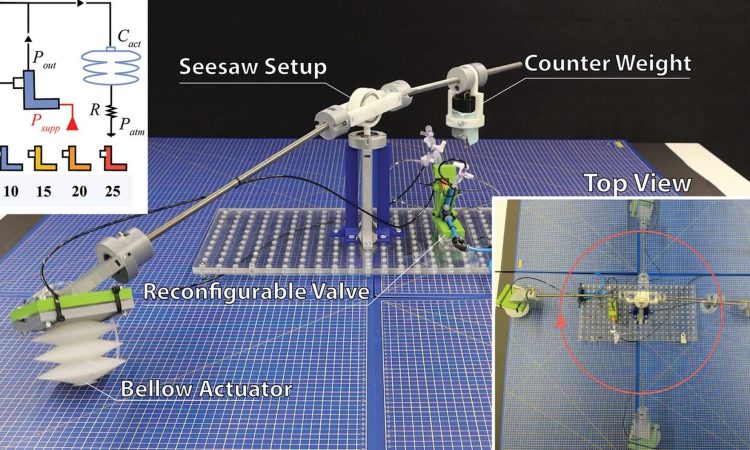
Engineers have for the first time been able to give robots complex instructions without using electricity; this helps robots think by freeing up more space in the robotic ‘brain’.
Taking inspiration from the way certain parts of the human body work, researchers from King’s College London (England) have transmitted a series of commands to devices using a new type of compact circuit, using pressure variations of a fluid inside it.
This discovery paves the way for a new generation of robots, whose bodies could function independently of the built-in control center, freeing up space for more complex Artificial Intelligence (AI) software.
Delegating tasks to the “body” helps robots think
“Delegating tasks to different parts of the body frees up computational space, allowing future generations of robots to be more aware of their social context or even more dexterous. This progress opens the door to new forms of robotics in areas such as social care and manufacturing,” said Dr Antonio Forte, senior lecturer in engineering at King’s College London and lead author of the study.
The results, published in the journal , could also enable the creation of robots capable of operating in situations where electrically powered devices cannot, such as exploring irradiated areas such as Chernobyl, which destroy circuits, or in electrically sensitive environments. such as magnetic resonance imaging (MRI) cameras.
The researchers also hope that these robots can be used in low-income countries that do not have reliable access to electricity.
What is the researchers’ invention based on?
“In simple terms, robots are divided into two parts: the brain and the body. it can handle a city’s traffic, but many robots still struggle to open a door; Why? Software has advanced rapidly in recent years, but hardware has not kept up. By creating a hardware system independent of the software that operates it, we can offload much of the computational burden to the hardware, just as the brain does not have to tell the heart to beat,” explained Dr. Forte.
Currently, all robots rely on electricity and computer chips to function. A robotic “brain” made up of algorithms and software translates information to the robot’s body (hardware) via an encoder, which then executes an action.
In “soft robotics,” a field that creates devices such as robotic muscles from soft materials, this is particularly problematic because it introduces hard electronic encoders and puts extra pressure on the software to make the material act in a complex, for example, to grab a door handle.
To overcome this problem, the team developed a reconfigurable circuit with an adjustable valve that can be placed in the robot’s hardware. This valve works like a transistor in a normal circuit, and engineers can send signals directly to the hardware using pressure, mimicking binary code, thus allowing the robot to perform complex maneuvers without having or instructions from the central brain. This allows for a greater level of control than current fluid-based circuits.
Without something to help robots think, their performance would cap
By offloading software tasks to hardware, the new circuit frees up computational space, allowing future robotic systems to be more adaptive, complex and useful.
The researchers now plan to extend these circuits from experiments on small devices to larger robots, such as those used to monitor power plants or robots with completely soft motors.
“Ultimately, without investment in body intelligence, robot performance will cap. If we do not delegate the computational tasks that robots currently carry, algorithmic improvements will have little impact on their performance. Our work is only a first step on this road, but the future brings smarter robots with smarter bodies,” concluded Mostafa Mousa, researcher at King’s College London and author of the study.

